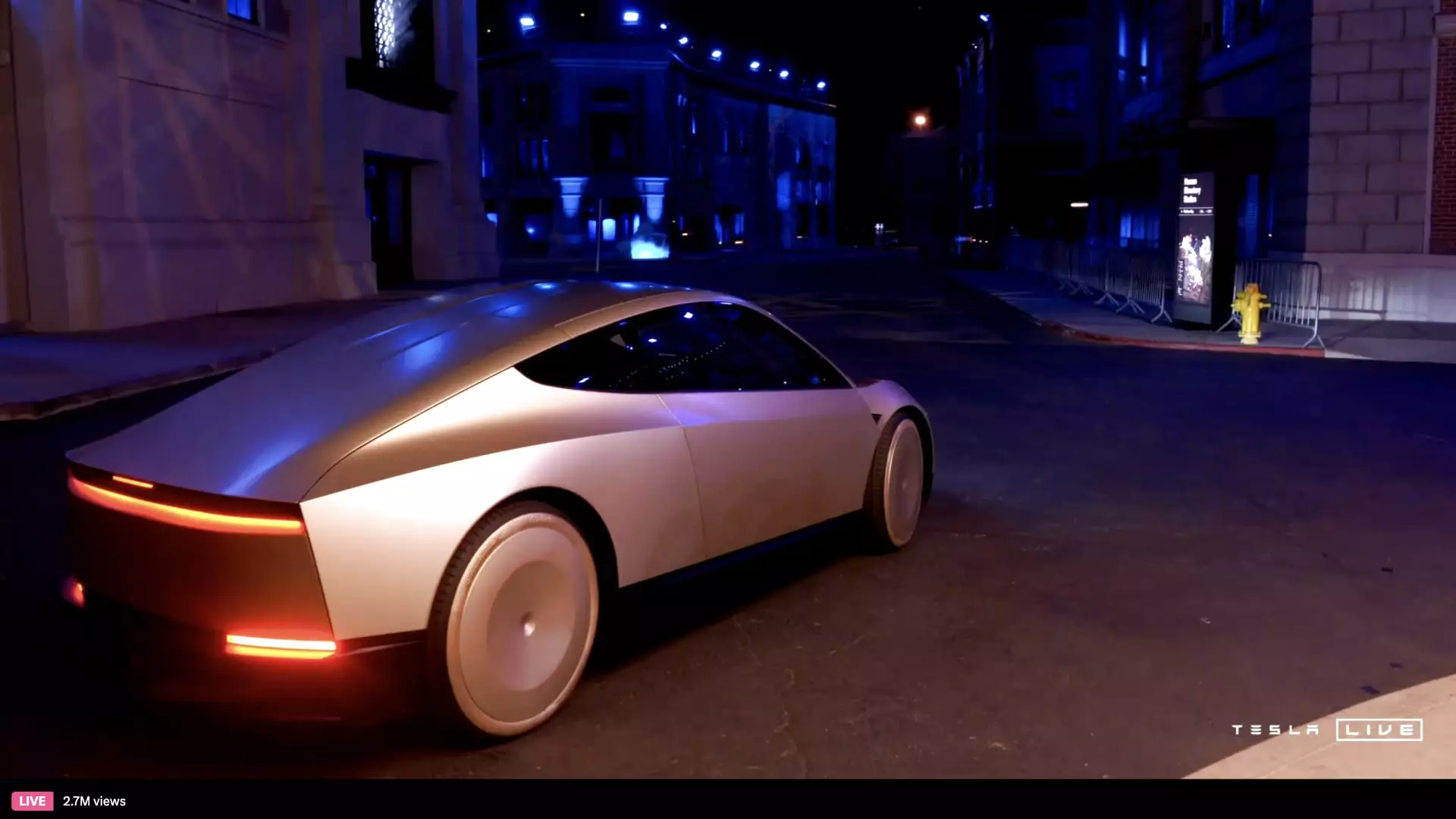Tesla, the electric vehicle pioneer led by the enigmatic CEO Elon Musk, experienced a significant stock downturn following its much-anticipated robotaxi event. On Thursday evening, Musk introduced the Cybercab, Tesla’s self-driving concept, which failed to captivate investors’ expectations. As the market opened on Friday, Tesla stock plummeted by 5.8%, highlighting a growing discontent among investors regarding the company’s trajectory towards autonomous vehicles.
The highlight of the event was the debut of the Cybercab, a sleek, silver two-seater designed without traditional driving controls—no steering wheel, no pedals. The futuristic concept aimed to showcase Tesla’s ambition for a fully autonomous vehicle capable of navigating roads independently. However, Musk’s presentation left many wanting more, as he provided scant details on the production timeline or manufacturing locations for these vehicles. While he stated ambitions to bring the Cybercab to market by 2027 with a price point below $30,000, the lack of concrete information raised concerns about the feasibility of these timelines.
Musk’s comments about the near-future implementation of unsupervised Full Self-Driving (FSD) technology in Model 3 and Model Y, expected in Texas and California, also fell flat. Currently, Tesla’s FSD remains in a “supervised” state—an expensive feature requiring active human oversight. The absence of clarity and urgency regarding the advancements of this crucial technology disappointed investors looking for incremental progress.
Analyst Reactions and Concerns
In the aftermath of the event, several financial analysts shared their sentiments on Tesla’s disheartening performance. According to Barclays, the event missed an opportunity to unveil immediate growth prospects for Tesla, instead opting to highlight Musk’s long-term vision. The analysts criticized the lack of specific details surrounding Tesla’s upcoming low-cost model, its timeline for production in early 2025, and progress updates on the FSD technology, suggesting that the event was more about grand statements than substantial data.
Further commentary from Piper Sandler indicated a palpable sense of disillusionment among trading firms, observing that the Cybercab unveiling did not meet performance expectations. They suggested a potential sell-off in the coming weeks, foreseeing that the pre-event hype could shortly dissipate. Morgan Stanley also chimed in, expressing disappointment that Musk did not adequately position Tesla as a leading contender in the AI landscape or provide insights into strategic partnerships, like the rumored collaboration with xAI, which Musk previously dismissed.
The stagnation exhibited during the Cybercab event casts a shadow on Tesla’s long-term impact in the autonomous vehicle market. Although there is a broad consensus that self-driving cars are the future, regulatory hurdles and safety concerns present significant obstacles. With self-driving technology still in its infancy and companies like Waymo operating robotaxi services successfully, Tesla’s ambitions are not just about innovation but also about competing in an increasingly competitive landscape.
Tesla must balance its visionary narratives with tangible results. As it stands, the lack of immediate, actionable information from the robotaxi event has left a gap in investor confidence. As the world grows impatient for advancements in autonomous vehicle technology, Tesla has no choice but to shift its focus from futuristic aspirations to the realities of today’s market demands and regulatory frameworks.
Ultimately, the Cybercab event served as a reminder that grand visions, while inspiring, require grounding in reality through practical developments and transparent communication. For Tesla to maintain its position as a leader in innovation, it must provide stakeholders with not just dreams of autonomous vehicles but tangible, verifiable steps towards that future. The time has come for Tesla to convert lofty promises into realistic strategies and outcomes if it hopes to regain investor trust and navigate the evolving landscape of electric and autonomous vehicles.

